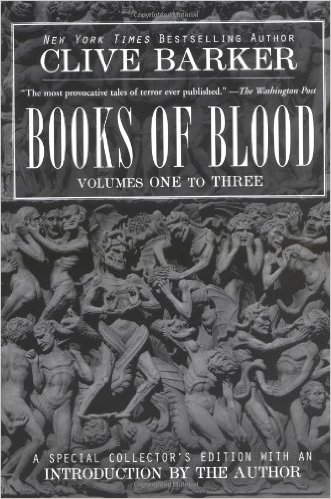This story is in the first Book of Blood, right after another one of my favorites, “The Midnight Meat Train.” I feel like its placement there was a nice choice – a little something to give readers a break after the traveling abattoir story.
The Yattering is a very “lesser demon” assigned the thankless job of “catching” the soul of one Jack J. Polo, originally promised to Hell by his Satan-worshipping mother. However, when his mother cheated Satan by dying in the arms of a priest, the contract between mother and Hell-spawn was cancelled. Unwilling to let bygones be bygones, Beelzebub sent his minion to collect anyway.
On the one hand, I always felt like Barker was having a little fun with this story. He created the terminally dull Jack Polo, and then had him play his role to the hilt, eventually driving the Yattering mad with frustration. (And anyone who’s ever dealt with the terminally dull can empathize with the Yattering’s misery.) It’s fun to cheer at the end when the Yattering screws itself and chases Jack out of the house and actually lays hands on him – effectively making its former victim now its master.
But then, when you look closer it’s not really that funny. While Polo played deaf, dumb and blind, the demon killed every animal brought into the house and drove Polo’s youngest daughter, Amanda, mad. The oldest daughter, Gina, survived, and actually figured out what was going on near the end. If Barker had given Polo just the one daughter, Gina, who joined in the fight at the end, I would have called it a happy ending. Yay, humanity wins again. However, the younger daughter’s madness is problematic, and not something I could just ignore.
You could argue that Polo, perhaps, had no choice but to let things play out the way they did. He might not have realized how horrifying the Yattering could be – especially to the average person with no particular knowledge of demons, unlike himself.
I personally never thought that Polo willfully sacrificed his daughter’s sanity just to save his own ass. Yes, it was important for him to win, but not just in an ego-centric way. He was fighting for his very soul, and he may have believed it was important for him to win in a much larger sense. It’s not outrageous to think that there might have been a sort of “granddaughter clause” in Mom’s original contract – you can have my soul, my son’s soul and his daughters’ souls – all for one low, low price.
In my fantasy continuation of the story, Polo keeps Amanda at home with him; taking care of her while – in between selling gherkins – he turns the Yattering into his own private butler, cook, guard dog, and nursemaid for Amanda. I can even see the Yattering gradually becoming visible, because he has fallen so low on the demon hierarchy — forced to wear unfashionable clothing to hide its hideous nakedness, even down to wearing an apron with happy lobsters crawling all over it. Amanda eventually grows used to the hapless demon, growing stronger in mind and spirit. She comes to pity its trapped existence, and even ends up feeling sorry for it. Maybe Amanda’s pity is the solvent that ends up destroying its ties with Hell and setting the Yattering free.
I don’t know if Clive Barker set out to make this a story of one demon’s possible redemption, but I’d like to think that there’s hope for everyone, and everything. Even a demon as hopeless as the Yattering.


